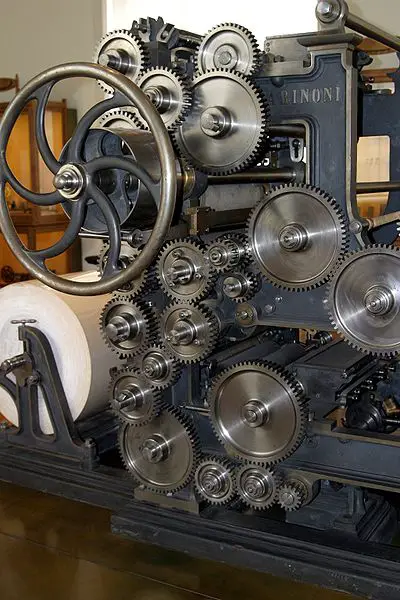Here is an excellent article by Bill Bonner on the announcement that Japan made that they are going to crank up the printing press and eliminate the deflation that has been plaguing their economy over the last twenty years. In it he explains the effects of money printing both short term and longer term. He also debunks the idea of where demand actually comes from. He says, “People always want stuff. Demand is infinite. Government doesn’t have to stimulate it. What really matters is buying power.”~Tim McMahon, editor
Why Money Printing Makes You Poorer
 Last week, Japan announced that it would undertake a bold and radical experiment. After 23 years of on-again, off-again deflation, the new government decided it had had enough of things getting cheaper. The Bank of Japan will now obediently monetize debt until inflation reaches 2%. This, the country’s central bankers believe, will encourage people to spend. The economy will take off.
Last week, Japan announced that it would undertake a bold and radical experiment. After 23 years of on-again, off-again deflation, the new government decided it had had enough of things getting cheaper. The Bank of Japan will now obediently monetize debt until inflation reaches 2%. This, the country’s central bankers believe, will encourage people to spend. The economy will take off.
Why is it better for people to spend more tomorrow than they want to spend today? Why is it better for prices to go up 2% than to go down 2%? Why is an economy that “takes off” better than one that sits calmly on the runway?
Those questions will have to wait for another day; no one bothers to ask today. Economists say the secret to prosperity is to stimulate demand. Anything that stimulates demand is thought to be a good thing. It doesn’t seem to matter that this proposition is transparent poppycock. People always want stuff. Demand is infinite. Government doesn’t have to stimulate it. What really matters is buying power. And buying power is limited. The authorities try to get around this problem by printing money. Then, with this new money in hand, it is almost as though people had real demand!
The Demand Delusion
But that’s what is so breathtaking and so funny about this time we live in. Who really believes you can increase demand… and make people wealthier… by just printing up money? Who really believes you can give people more buying power by giving them more pieces of paper?
Apparently, just about everybody! Ha ha ha!
Real demand depends on real earnings, not more currency. People buy things by producing things. That’s “Say’s Law,” named after Jean-Baptiste Say. Buying power — or demand — comes from production, not pieces of paper.
Economists and central bankers cannot increase real demand. But they can sure move it around!
Giving money to poor nations — foreign aid — does not make them richer; it undermines local industries and makes them poorer. But some people get richer. Mercedes-Benz dealers in Africa noticed that whenever a new foreign aid program was announced, sales of their high-end models shot up. The insiders knew they could skim millions from the aid programs.
Now, when new QE programs are announced in Japan, Ferrari sales shoot up. From Bloomberg:
Registrations of Fiat SpA (F)’s ultra-luxury brand surged 40%, to 144 vehicles, in Japan last quarter, according to the Japan Automobile Importers Association yesterday. That’s more than twice the pace in the larger U.S. market, while demand is slumping in China, at home and across Europe.
The surge in demand for luxury cars adds to signs that Prime Minister Shinzo Abe and Bank of Japan Governor Haruhiko Kuroda are succeeding in reviving spending in the country. Stock prices are climbing back to levels before the September 2008 collapse of Lehman Brothers Holdings Inc., and households have become more confident about the economic outlook.
“The growth is very promising, and I think we can expect these super luxury brands to introduce more models that they hadn’t introduced to Japan before and to strengthen their dealership networks,” said Yoshiaki Kawano, a Tokyo-based auto analyst at industry researcher IHS Automotive. “The optimism for an economic recovery is spreading.”
To sustain growth, Ferrari opened a new after-service facility in Japan this month, said Herbert Appleroth, head of the company’s operations in the country.
Getting Poorer
When you print money, it’s like issuing new shares in a public company. The existing shares become worth less than they were before… because each one represents less of the total company.
Likewise, the currency of a nation represents the goods and services that the nation produces. Print more currency and each unit will have fewer goods and services behind it.
But some people get the new shares… or new money… and are richer. Everyone else may be poorer, but the people first in line for the free cash come out ahead. Economists and other dim observers look at the increase in Ferrari sales with approval. Again, from Bloomberg:
“It seems like demand is coming back,” said Michiaki Ishida, a spokesman for the auto importers association. “Some people are reacting to Abenomics, so the trend may continue.”
What the mainstream press doesn’t realize is that, although high-end demand goes up as insiders make wins from speculating on asset prices, real demand goes down.
That’s because new money reduces the buying power of the old money. Except for the few insiders, speculators and sharpies who are first in line to get the EZ money, everyone else gets poorer.
Is that funny… or what?
Regards,
Bill Bonner
See Also:
- What is Quantitative Easing?
- What is the Real Definition of Inflation?
- Disinflation – What is it?
- What Is Fiat Currency?
- Does The “FED” Really Just Print Money?
- Inflation and Velocity of Money
Recommended by Amazon:
- The Great Deformation: The Corruption of Capitalism in America
- The Bankers’ New Clothes: What’s Wrong with Banking and What to Do about It
- After the Music Stopped: The Financial Crisis, the Response, and the Work Ahead
- The Battle of Bretton Woods: John Maynard Keynes, Harry Dexter White, and the Making of a New World Order (Council on Foreign Relations Books
- The Aftershock Investor: A Crash Course in Staying Afloat in a Sinking Economy
This article originally appeared at http://www.billbonnersdiary.com/articles/bonner-money-printing.html and was reprinted by permission.
About The Author
 Bill Bonner founded Agora, Inc in 1978. It has since grown into one of the largest independent newsletter publishing companies in the world. He has also written three New York Times bestselling books, Financial Reckoning Day: Surviving the Soft Depression of the 21st Century , Empire of Debt and Mobs, Messiahs and Markets.
Bill Bonner founded Agora, Inc in 1978. It has since grown into one of the largest independent newsletter publishing companies in the world. He has also written three New York Times bestselling books, Financial Reckoning Day: Surviving the Soft Depression of the 21st Century , Empire of Debt and Mobs, Messiahs and Markets.
His free daily e-letter Bill Bonner’s Diary of a Rogue Economist is your gateway to Bill’s decades of accrued knowledge about history, politics, society, finance and economics. Sometimes funny, sometimes frightening – but always entertaining and packed with useful insight, Diary of a Rogue Economist can help you make sense of the complex world we live in today.


You see this sort of over-cooked claptrap poncing about as informed commentary all the time.
Amazing. Ignore actual productivity increase – more output for less input. Ignore quality gain – better output for same input. Ignore profit gains from both. Ignore interest gains on savings. Ignore pay gains from productivity.
Ignore all that, and blame inflation. Yeah, yeah, yeah. Uh huh.
Oh and by the way, “printing money” isn’t what happens, anyway. But facts, eh – who cares about facts.
Yes we all know they don’t actually “print the money” big deal it is a figure of speach. You have a point, theoretically money printing could work similarly to a company borrowing money to invest in increased productivity. But when the government does it they don’t actually produce anything of value so they become more efficient at what? Taxing? Shuffling papers? Where is this supposed increase in quality and productivity coming from? better Missles? More efficient at blowing people up? None of these things improve the economy. Plus they don’t even invest it in new productivity most of the money government borrows goes to pay existing debt. How long can an individual or business continue operations when they have to keep borrowing in order to fund ongoing operations? It’s called “burn rate” in startups. Doesn’t work for long… ask all the dot coms that blew up in 2000.
Thank you for an excellent article! One thing to add though, is that new money CAN be used to create economic growth, but only if it is used in a limited capacity to jump-start an industry which has stalled for some abstract reason – that is if speculators don’t get to it first… Jump-starting the entire economy this way is a another story…